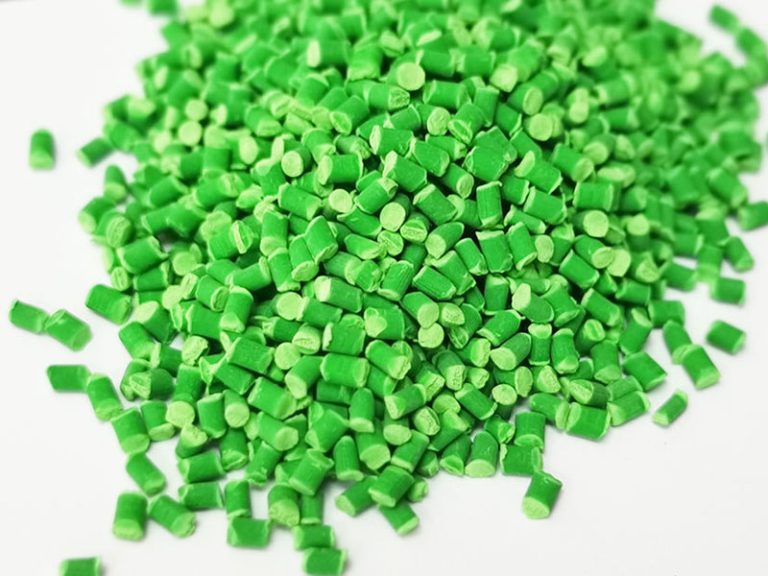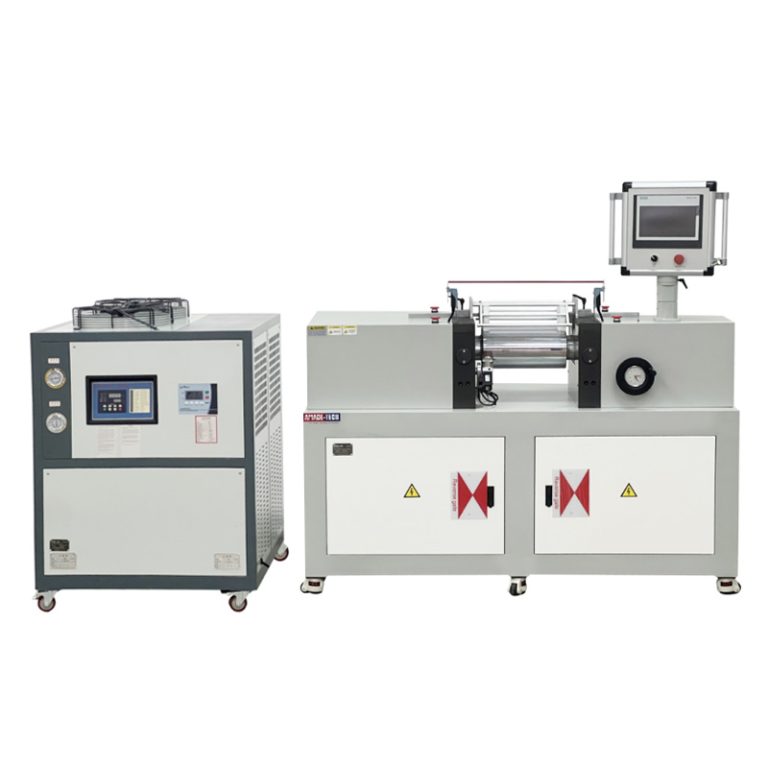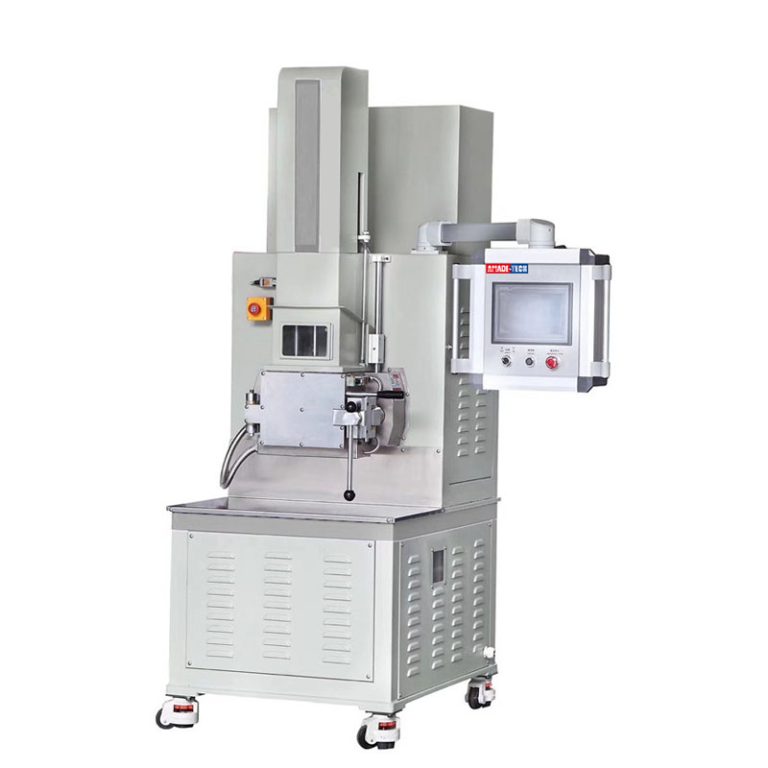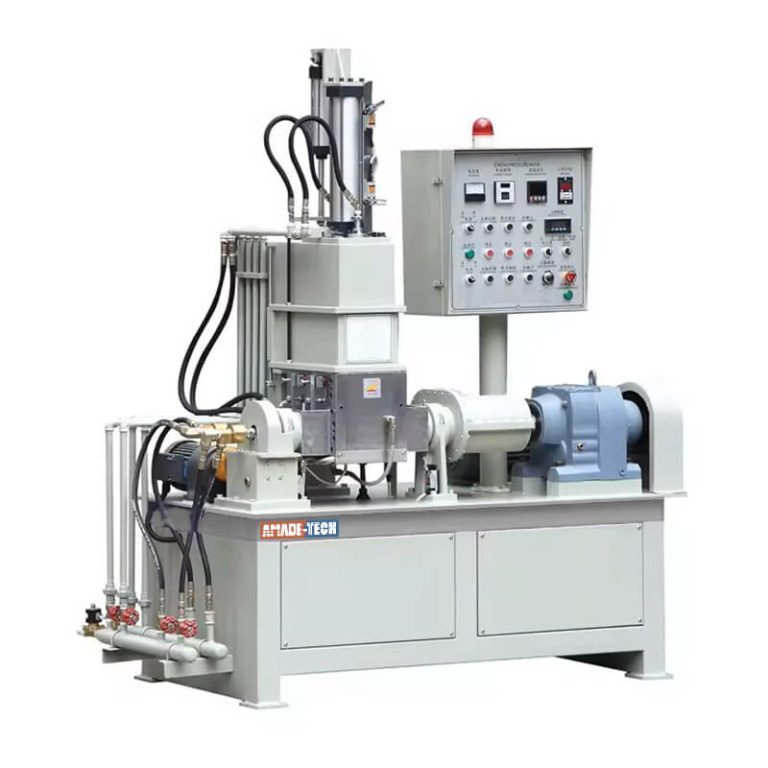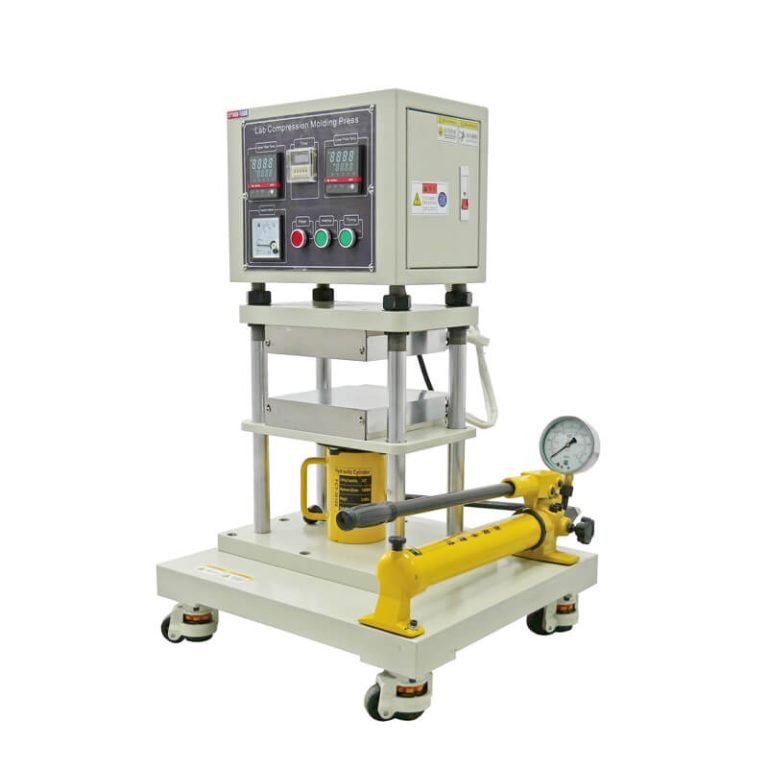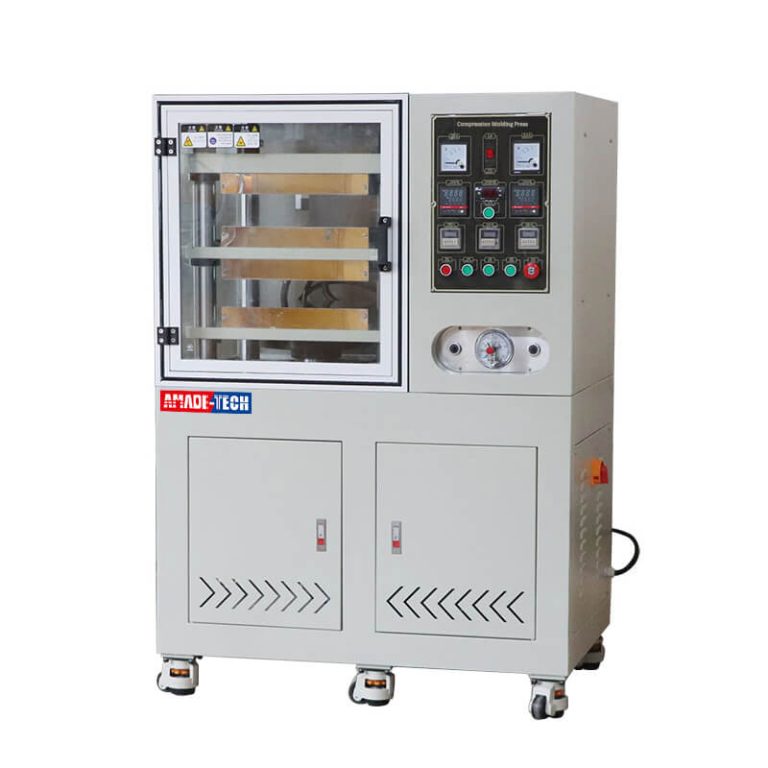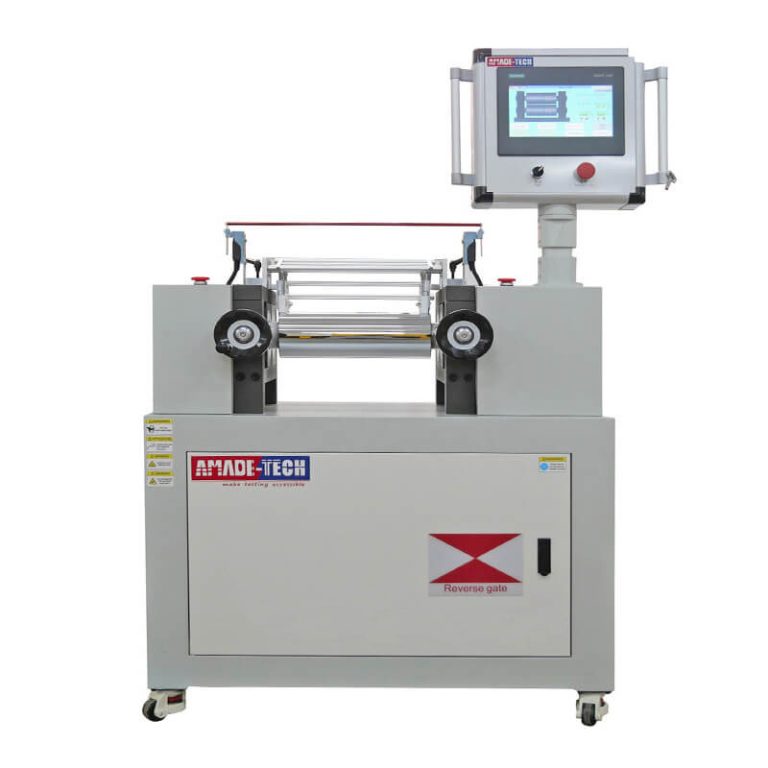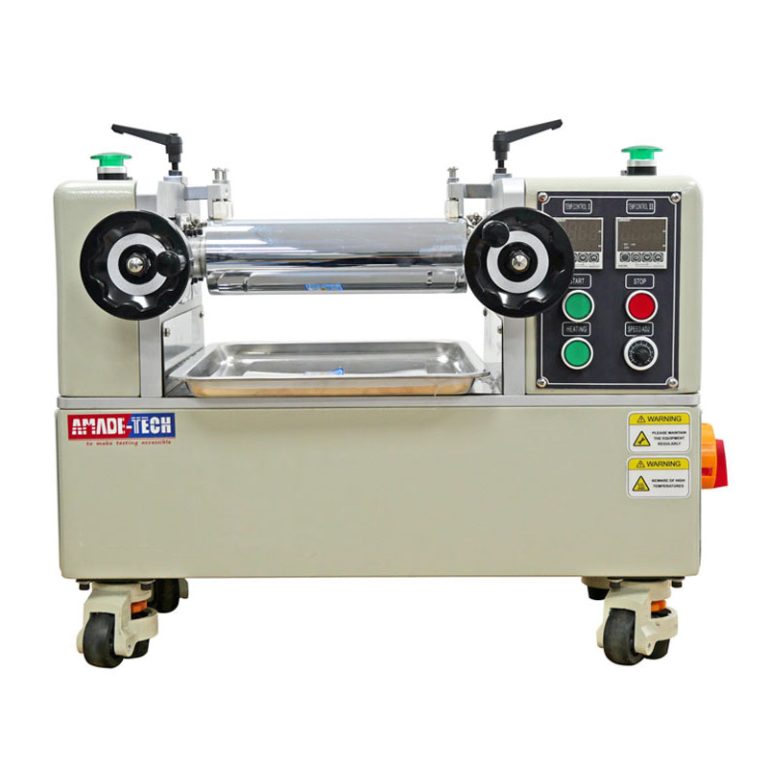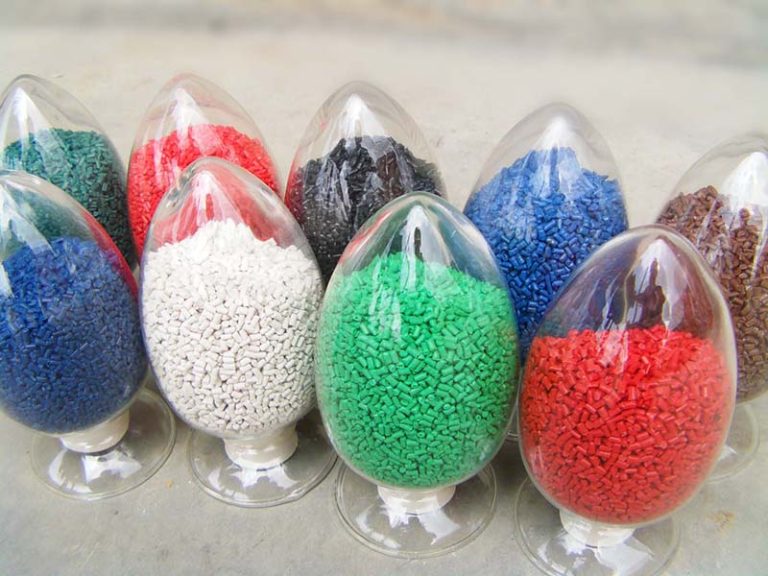
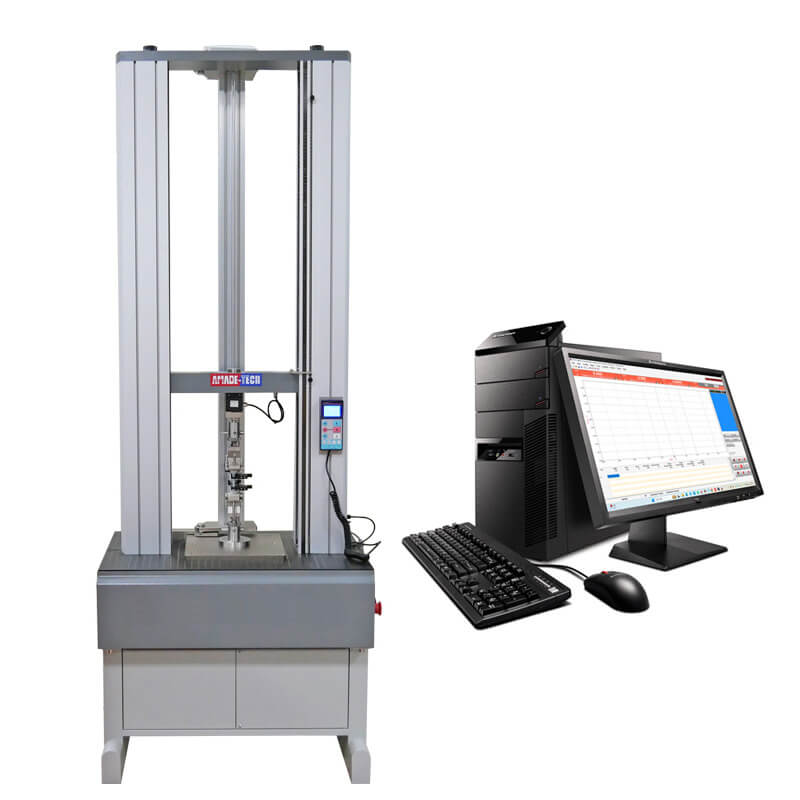
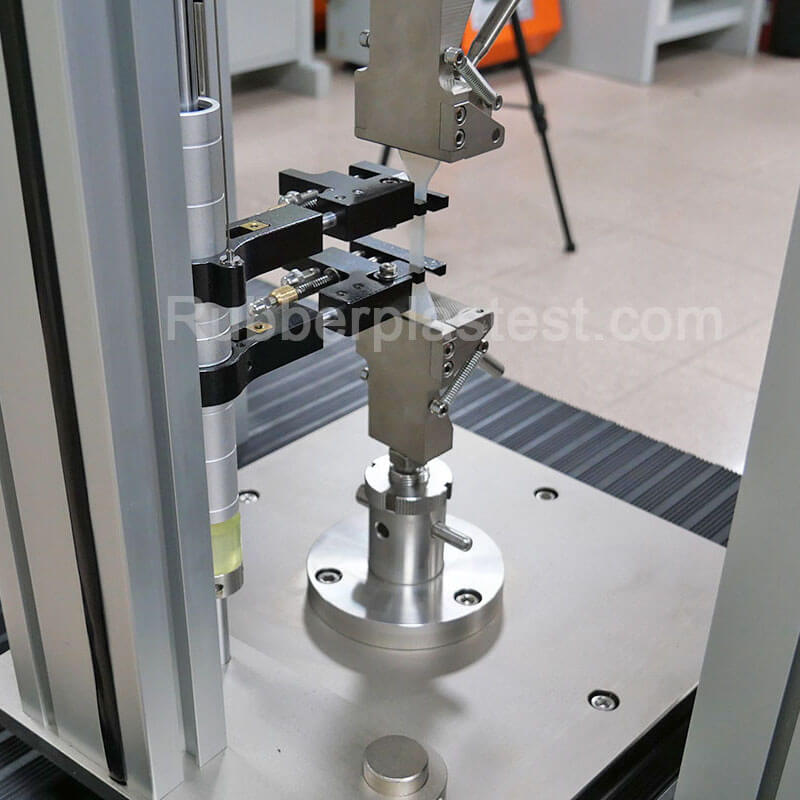
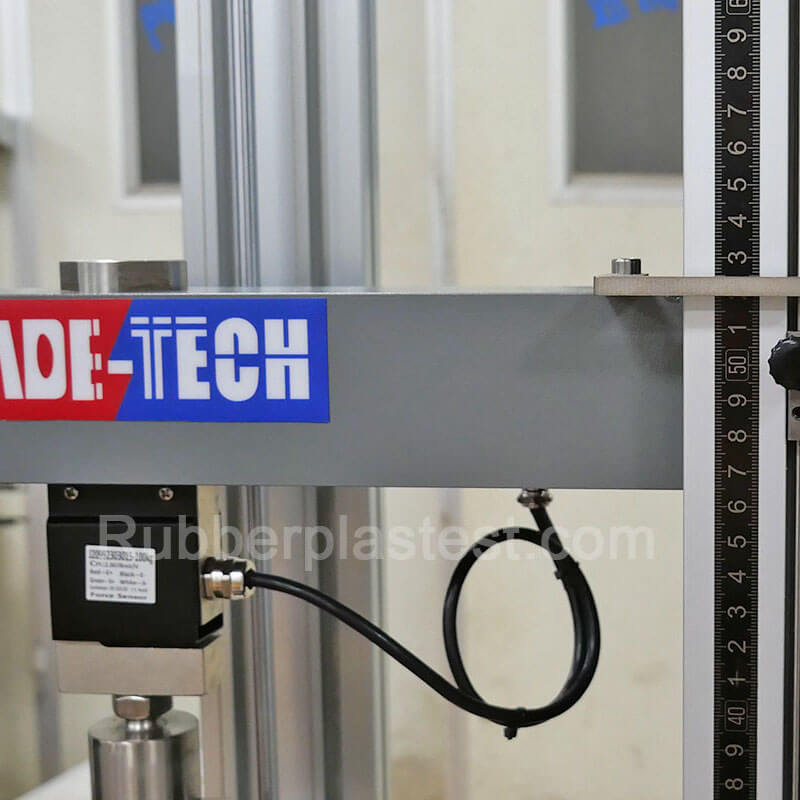
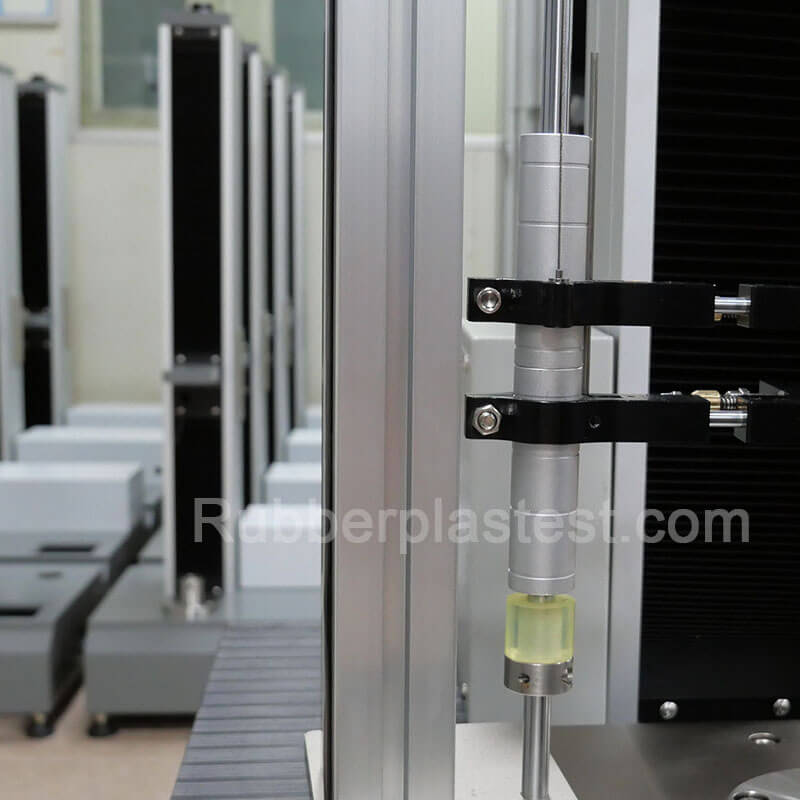
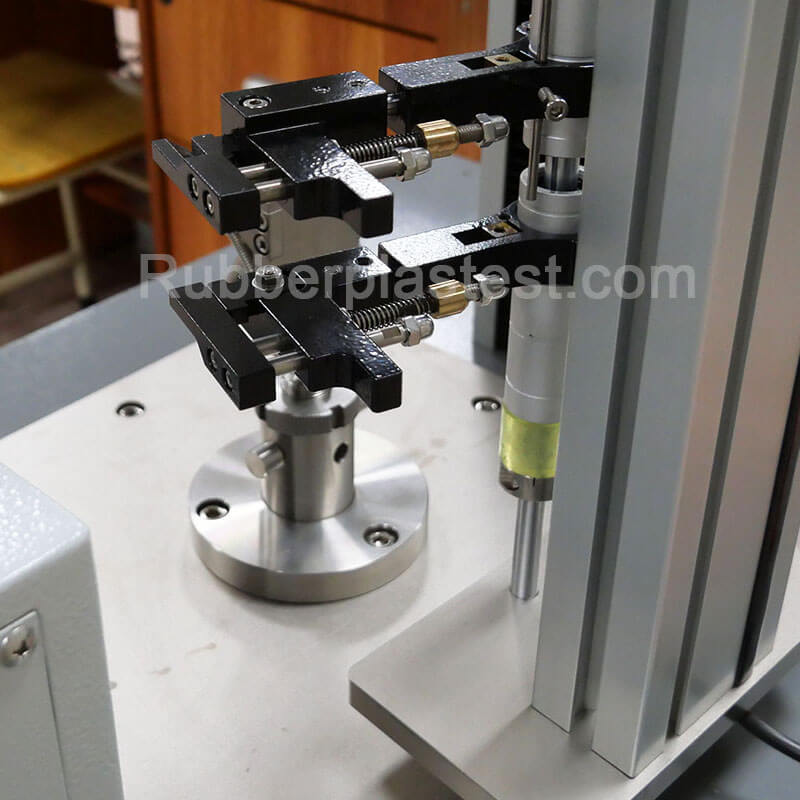





Rubber & Plastic Tensile Testing Machine
Model
AT-U2002 series
Applications
Used to determine the tensile properties, tear strength, bending resistance and other properties of vulcanized rubber, thermoplastic elastomers, plastics and other non-metal materials.
Standards
ISO 37, ASTM D412, ISO 34, ASTM D624, ASTM D638, ISO 527, ASTM D790, ISO 178, ASTM D624,etc.
Rubber & Plastic Tensile Testing Machine Description
This Tensile testing machine is an electromechanical universal testing machine driven by a servo motor specially used to measure the tensile properties, tear strength, bending resistance and other properties of vulcanized rubber, thermoplastic elastomers, plastics and other non-metal materials. It is capable of applying a prescribed force at a constant speed to a specimen, and the data of the specimen responding to the stress are recorded and presented in real time.
Our universal testing equipment has the advantages of high testing accuracy, good repeatability and reproducibility, high stability, and strong compatibility. You can replace different fixtures and attachments compatible with different samples according to specific test items. Sensors with different capacities can be flexibly replaced and applied at the test site according to different needs. We configure each tensile testing machine with a dedicated testing software based on Windows operating system, which contains a variety of ISO, ASTM, DIN and other testing standards. The required loading conditions and test methods have been created for each standard. You only need to click on the corresponding standard to enter the test interface and easily perform the test.
AmadeTech tensile testing machine mainly consists of a load frame, crosshead, load cell, grips and attachments, extensometer, drive system, test software, remote control, etc.
Load Frame
Our rubber & plastics tensile testing machine features a double-column frame structure. Two columns made of rugged aluminum alloy stand parallel to each other on the solid base of the machine, and the tops are connected by a metal crossbar to form a whole, which makes the machine strong and stable enough to ensure the safety of the test. If necessary, you can also customize the height of the columns according to the elongation of your sample. We equip the two columns with flexible dust covers to prevent dust from entering. Each column is equipped with a ball screw pair to transmit force.
Crosshead
Crosshead is responsible for applying the pulling or pushing force to the test specimen during the test. It is a high-strength metal square steel which is installed horizontally between two columns and each side is connected to the lead screw inside the columns. When you start the machine, the crosshead can move up and down along the vertical axis of the testing machine with the rotation of the lead screw, allowing for precision control over the rate at which the force is applied to the specimen. Moreover, the crosshead also holds a sensor measuring the amount of force being applied to the specimen and a grip holding the specimen. In a word, the movable crosshead of the tensile tester is a critical component that plays a key role in conducting tensile/compressive tests.
Load Cell
The load cell is directly installed at the midpoint of the bottom of the crosshead. It is designed to convert the mechanical force exerted on the specimen into an electrical signal that can be measured and recorded. Our 0.5-grade load cell is calibrated to accurately and precisely measure the amount of force being applied to the specimen, providing valuable data for analysis and ensuring the reliability of the test results. We can provide load cells with different capacities from 100 N to 10 kN according to different test requirements. You can easily replace load cells with different capacities using a wrench.
Drive system
Our tensile testing machine uses a high-precision servo motor as the power source to ensure smooth loading and ultra-high control accuracy. The ball screw pairs are used to improve the transmission efficiency and efficiently convert electrical or mechanical energy into the controlled movement of the crosshead. The transmission is sensitive and stable, with low friction resistance, good sensitivity, no vibration at startup, and can control micro-feed atμlevel. It brings good accuracy retention, minimal rolling friction and wear, and exceptional reliability and service life.
The drive system allows for precise control over the speed at which the force is applied to the specimen during the test. By adjusting the parameters of the drive system, such as speed and force, you can tailor the testing conditions to meet specific requirements and standards.
Grips & Attachments
The jig is a device used to hold the specimen during the test. It consists of two parts, a moving grip connected to the lower part of the load cell and a fixed grip located in the middle between the two columns of the machine base. The center axis of the upper and lower grips must be on the same vertical line. When you do a tension test, the crosshead of the tensile machine moves upward driving the moving grip upward to stretch the specimen until the test condition is reached. When doing a compression test, we will provide you with corresponding attachment instead of grips. It allows the upper moving attachment to move in the opposite direction of the tension test to approach the lower attachment compressing the specimen. According to your different test standards and specimen specifications, we can provide different types of grips and attachments to meet the test requirements. The modular design facilitates you to change different grips and attachments as needed. We specially configure self-tightening eccentric roller grips for rubber tensile tests. For plastic tensile tests, we configure a pair of wedge grips.

self-tightening Eccentric roller grips

wedge grips

flexural test attachments

rubber peel test jig
Extensometer
Different from the displacement measuring device built into the machine, the Extensometer is an additional device used to accurately and scientifically measure the extension or deformation of a rubber or plastics specimen when subjected to an increasingly tensile force. Its main body is vertically mounted on the machine frame, equipped with two clips that can move freely up and down to clamp the middle portion of the specimen symmetrically with a set gauge length.
When you start the test, the upper and lower clips will move with the deformation of the specimen until the end of the test without slipping. The displacement data between the two clips are collected by the extensometer and can be transmitted to the machine control system in real time via a cable. It helps in providing real-time data on the strain or deformation of the specimen and allowing you to analyze the material’s behavior under stress and determine important mechanical properties such as modulus of elasticity, elongation at break, and ultimate tensile strength.

Testing Software
Each of our tensile testing machines is equipped with a dedicated testing software running on the latest Windows operating system. The software supports switching between Chinese and English language interfaces, and is easy and intuitive to operate. The system has preset test methods and parameters such as test speed, test direction, end criteria, etc. corresponding to dozens of different test standards including ISO, ASTM, DIN, JIS, GBT, etc. After opening the software, you only need to click on the standard you follow to directly enter the test interface, and then enter the basic sample data to start the test. Our software integrates measurement, control, calculation, and storage functions. It has the function of automatically calculating stress, elongation, tensile strength, and elastic modulus, and can automatically present the results, and automatically record the maximum point, breaking point, and the force or elongation of the specified point. The computer screen can dynamically display the test curve and parameters during the test. After the test, the curve can be enlarged through the graphics processing module for data re-analysis and editing. The test results can be saved in WORD, EXCEL, PDF and other formats, and can be exported and printed.

Remote Control
In order to facilitate you to operate the machine, we have equipped each machine with a wired remote control. In this way, you can not only control the machine with the help of the computer screen and mouse, but also use the remote control to start and end the test or press the up, down, and zero buttons to achieve the rise, fall, and zeroing of the crosshead.
This function can accurately control and locate the position of the fixture, which is very practical when you load the specimen. In addition, there is also an electronic screen on the remote control that can display the force value, elongation and test speed in real time, so that you can master the basic test parameters without looking at the computer screen.
There is a magnet on the back of the remote control to enable you to attach it to the column when not in use.

Rubber & Plastic Tensile Testing Machine - Videos
Rubber tensile strength test
Rubber tear strength test
Plastic tensile strength test
Plastic flextural strength test
Rubber & Plastic Tensile Testing Machine - Technical Specifications
Model | AT-U2002 series | |
Load cell capacities | 100N, 200N, 500N, 1KN, 2KN, 5KN, 10KN, 20KN optional | |
Drive + transmission | Servo motor + ZNT high precision ball screws | |
Column span | 380 mm (customizable) | |
Grosshead travel | 1100 mm (grips excluded, customizable) | |
Accuracy level | 0.5 grade | |
Load parameters | Force measuring range | 0.4% ~ 100% FS |
Force measuring error | ≤ 0.5% | |
Force resolution | ±1/500000 | |
Displacement parameters | Displacement accuracy | ≤ ±0.5 / ±0.2 of indicating value |
Displacement resolution | 0.015μm | |
Deformation measuring system (Optional with extra cost) | l Large deformation: minimum gauge length 10mm | Deformation range: 800mm l Small deformation: gauge length 25mm, 50mm, 100mm | Deformation range: 5mm, 10mm, 25mm | |
Control parameters | Controller | Windows-based PC software |
Test speed | 0.001 ~ 500 mm/min adjustable | |
Force control rate adjustment range | 0.005 ~ 5%FS/s | |
Rubber & Plastic Tensile Testing Machine - Principle
The two ends of the sample are tightly clamped in the upper and lower clamps. The lower clamp is stationary, and the upper clamp pulls the sample upward along its longitudinal axis at a constant speed as the crosshead moves upward, until the sample breaks or until the stress or strain suffered by the sample reaches the specified value. The stress and strain signals of the sample during the stretching process are collected in real time by the corresponding components for system processing, calculation, analysis and conversion into various data and curves and presented on the display.
Rubber & Plastic Tensile Testing Machine Features
- Suitable for mechanical testing of various non-metallic materials including rubber and plastic.
- It can perform different test items such as tension, compression, bending, shear, peeling, tearing, two-point extension, etc.
- Comes in a dual-column structure to offer stable running.
- Supports selection and replacement of various force sensor capacities.
- A variety of different fixtures and accessories can be provided to achieve tension or compression testing.
- An additional large deformation extensometer is configured.
- The machine is equipped with English test software based on Windows operating system.
- The software has built-in test methods corresponding to different test standards, and users can directly click to select to enter the test interface.
- Various distance units and force units can be interchangeably selected.
- The test curve and test parameters can be displayed in real time on the computer screen.
- The historical curves can be called out for comparison.
- Software automatically analyzes, counts and calculates the test results.
- Software also supports users to customize various settings according to test needs.
- The test results can be saved and output in WORD, excel, PDF format.
- Supports various custom settings and extended test items.
- It comes with limit protection device and overload protection program.
- Equipped with a remote control for users to control the machine.
FAQs About Rubber & Plastic Tensile Testing Machine
The main applications of laboratory two roll mills are in the rubber and plastics industry.
The first function of the laboratory rubber mixing mill is mastication. Before rubber is mixed, it often needs a mastication process to break its long molecular chains to increase fluidity and plasticity, which facilitates even dispersion and mixing of various additives later. After the mastication is completed, we need to use an open mill to mix the various ingredients to complete the mixing. During the mixing process, fillers, such as carbon black, and other additives need to be added, and finally there is a sulfur addition process.
Why do we use an two roll mill to add sulfur? Often a lot of mixing is done with an internal mixer because it works more efficiently, but the internal mixer will squeeze and shear the materials intensely during processing and cause the temperature of the rubber materials to rise higher. When the temperature is relatively high, if we put a vulcanizing agent such as sulfur in, it will result in vulcanization in advance, which is also called scorch, which is not allowed to happen. So we need to take the rubber materials out of the internal mixer and put it on the open mill rolls to continue processing. This has two purposes: one is to lower the temperature of the material, and the other is to use an open mill to add the vulcanizing agent to the material and mix it evenly to prepare the material for vulcanization later in the vulcanization tank or vulcanizing press.
The function of the laboratory plastic two roll mill is to use high-temperature rolls and shearing force generated by the two rolls to mix and plasticize the mixture containing resin and various additives to disperse it evenly, promote mutual penetration and absorption between the components, and finally obtain the desired thickness of sheet material for further comparison and testing.
Get a Customized Quote for a Rubber & Plastic Tensile Testing Machine that Best Meets Your Needs
Tell us about your unique testing requirements to get a personalized solution from AmadeTech
Related Posts
